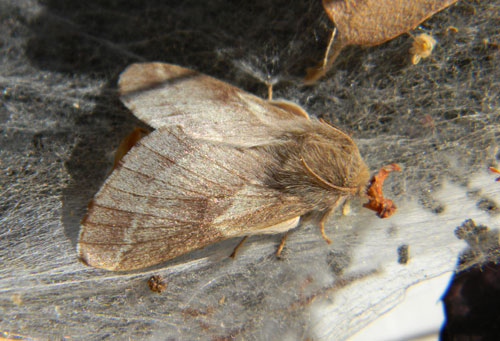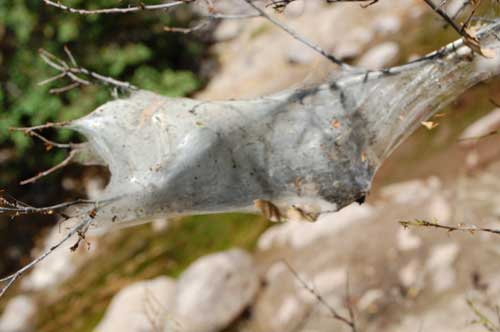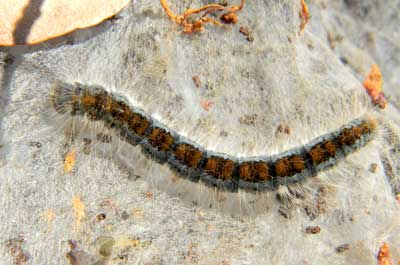Southwestern Tent Caterpillar
Malacosoma incurvum


Southwestern Tent Caterpilars were found in their tents on chokecherry growing along Devil's Canyon, Gila Co., Arizona, USA. May 2010. The adult, in top photo, emerged in early June. 2009.
By mid to late spring the large webbed tents of tent caterpillars begin
appearing on trees of willow, cottonwood and in this case, chokecherry within
and near sycamore woodland galleries. Occasionally the populations can grow so
large that many trees are completely defoliated. Most years, however, the tents
will be found with an incidence of one or two per tree. Normally caterpillar
numbers are held in check by a array of predators - some birds, cuckoos for
example, are able to penetrate the tents to get the worms. Predation also
happens as smaller  parasitic wasps
and flies get into the caterpillars. The caterpillars emerge from the tents at
night to feed and to expand the tent as necessary so that all can shelter
within during the day when birds and parasites are most active.
parasitic wasps
and flies get into the caterpillars. The caterpillars emerge from the tents at
night to feed and to expand the tent as necessary so that all can shelter
within during the day when birds and parasites are most active.
In general, introducing pesticides to control these caterpillars is likely to make the problem worse because the pesticides kill off the natural predators. Trees that are defoliated quickly regrow a new set of leaves and suffer no long-term injury so long as heavy defoliation does not occur year after year.
Lasiocampidae -- Tent Caterpillar Family
Sponsored Links:
More Information:
- Bugguide - Iowa State University
- Butterflies and Moths of North America
- Moth Photographer's Group
- ITIS Taxonomic Report
- Google Images
- Google Scholar Literature Search